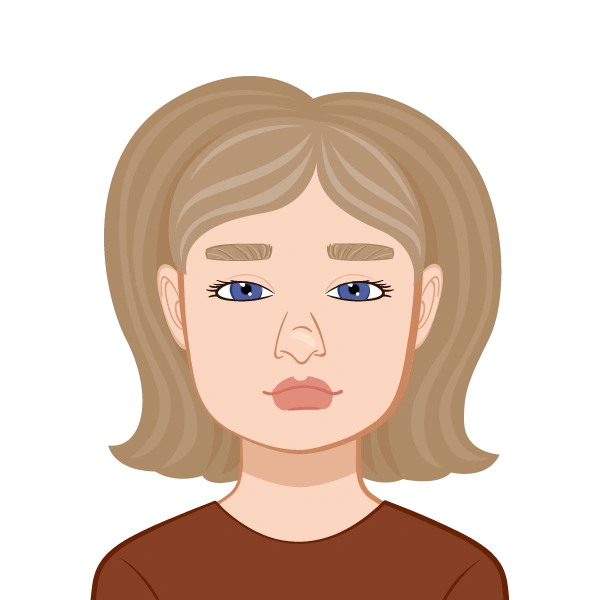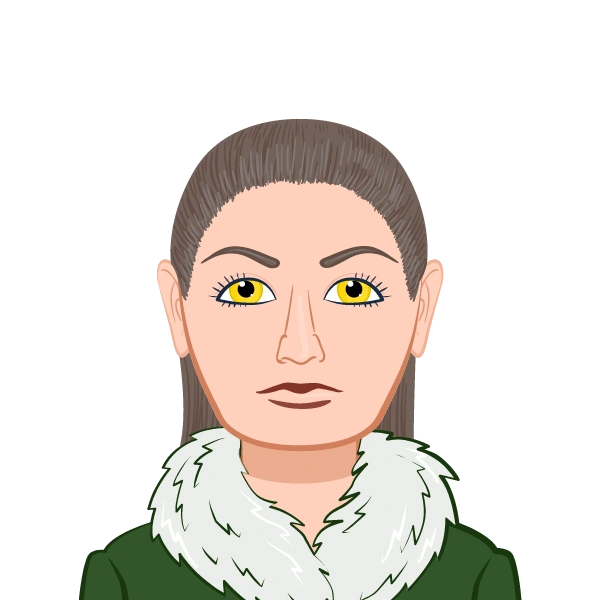Claim Your Discount Today
Start your semester strong with a 20% discount on all statistics homework help at www.statisticshomeworkhelper.com ! 🎓 Our team of expert statisticians provides accurate solutions, clear explanations, and timely delivery to help you excel in your assignments.
We Accept
Check Out Sample Social Science Research Homework
Need a glimpse into the quality of our work? Browse our repository of sample social science research homework to see examples of projects we've completed for students just like you. Our samples highlight our approach to different research methods, analysis techniques, and academic writing styles. These examples serve as a valuable resource to help you understand the depth of our expertise and how we approach various research challenges.
Statistics Research
Affordable Social Science Research Homework Help Tailored to Your Budget
At StatisticsHomeworkHelper.com, we recognize that students often need high-quality help without overspending. That's why our pricing for social science research homework help is designed to be both affordable and flexible. Whether you need basic homework support or help with more complex research projects, we offer pricing options to fit your financial situation. Our transparent structure allows you to choose the level of service that matches your needs without sacrificing the quality of the work. Take a look at our pricing examples below:
| Service | Price Range |
|---|---|
| Basic Research Paper (1-3 pages) | $40 - $60 |
| Intermediate Research Homework (4-6 pages) | $70 - $90 |
| Advanced Research Project (7+ pages) | $100 - $140 |
| Urgent Research Assistance (within 24 hours) | $60 - $110 |
| Custom Research Project | Custom Quote |
- Hire Our Highly Qualified Social Science Research Homework Helpers and Secure an A+ Effortlessly
- Why Choose Our Exceptional Help with Social Science Research Homework
- Subject Areas Covered by Our Reliable Social Science Research Homework Help Service
- How We Do Your Social Science Research Homework with Plagiarism-Free Solutions
- How Our Social Science Research Homework Help Service Works
Hire Our Highly Qualified Social Science Research Homework Helpers and Secure an A+ Effortlessly
At StatisticsHomeworkHelper.com, we pride ourselves on being the top choice for social science research homework assistance, thanks to our team of highly skilled and experienced experts. Each member of our team has a solid academic and professional background in social science research, ensuring that the homework we deliver are of the highest quality. Here's a look at the expertise behind our social science research homework help services:
- Ph.D. Experts: Our experts hold Ph.D. degrees in social sciences from renowned universities worldwide. They bring an in-depth understanding of research methods, theoretical frameworks, and statistical analysis, providing precise and well-structured homework.
- Experienced Researchers: Our team consists of seasoned researchers who have conducted extensive studies in various fields of social sciences. They are adept at handling complex research questions, data collection, and analysis, ensuring that your homework meets academic standards.
- Subject Matter Experts: At StatisticsHomeworkHelper.com, we collaborate with experts who specialize in different branches of social science, including sociology, psychology, anthropology, and political science. They have helped countless students excel in their homework, making us a trusted partner for social science research homework help.
Our experts are well-versed in various types of social science research methods and approaches. Here are the distinct categories of research our experts proficiently handle:
- Qualitative Research: Many students request help with qualitative research homework, and our experts excel in delivering comprehensive analyses based on interviews, case studies, and ethnographic methods.
- Quantitative Research: If your homework involves quantitative research, our experts can help you design surveys, collect data, and perform statistical analyses, using tools like SPSS and R to ensure accurate results.
- Mixed Methods Research: At StatisticsHomeworkHelper.com, our experts are well-equipped to assist students with mixed methods research, combining qualitative and quantitative approaches to provide well-rounded, insightful homework.
No matter the complexity of your social science research homework, our team is here to ensure you get the best possible results.
Why Choose Our Exceptional Help with Social Science Research Homework
At Statistics Homework Helper, our social science research homework help stands out for its reliability and expertise. Our team of seasoned researchers is dedicated to providing you with precise and well-researched solutions for all your social science projects. With a commitment to excellence, we offer the following benefits:
- 24/7 Support: Our team is available round-the-clock to address any questions or concerns you may have, whether it’s via live chat or email. We ensure that our communication is seamless, allowing you to reach us anytime for urgent assistance or project updates.
- Direct Contact with Research Experts: Unlike many platforms, we facilitate direct interaction with our experts. This ensures clarity and transparency throughout the research process, allowing you to communicate your specific needs and receive personalized assistance.
- Affordable Pricing: We recognize that students often have tight budgets, which is why we offer our services at competitive prices. Our goal is to deliver high-quality research assistance without putting a strain on your finances.
- Thorough Research and Analysis: Our experts go beyond basic solutions, offering comprehensive research and data analysis to support your social science projects. Whether it's data collection, statistical analysis, or theoretical framing, we ensure accuracy and depth in every homework.
- Revisions and Continuous Support: We believe in complete client satisfaction. That’s why we provide unlimited revisions and ongoing support, ensuring your homework meets all requirements and exceeds expectations, even after submission.
Don’t let social science research challenges overwhelm you. Whether it’s a tight deadline or a complex topic, our 24/7 homework help guarantees timely and accurate solutions. Let StatisticsHomeworkHelper.com handle your research needs with professionalism and expertise at unbeatable rates.
Subject Areas Covered by Our Reliable Social Science Research Homework Help Service
When you choose us for your social science research homework, you can be confident that your project will be managed by experts with extensive academic backgrounds and hands-on experience in conducting and analyzing social science research. Our team is dedicated to providing comprehensive support across a wide range of topics, ensuring that your homework are handled with precision and meet the highest academic standards. We pride ourselves on delivering accurate and timely homework solutions that guarantee 100% satisfaction.
Our expertise encompasses a broad array of research methodologies and social science disciplines, gained through years of practice and academic proficiency. Having successfully assisted students globally with complex research tasks, we are uniquely positioned to offer top-tier guidance in the following core areas within our social science research homework help services at StatisticsHomeworkHelper.com:
- Quantitative Research Methods
- Qualitative Research Methods
- Survey Design and Data Collection
- Social Statistics
- Ethnographic Research
- Case Study Analysis
- Sociological Theories and Models
- Research Ethics in Social Sciences
- Comparative Analysis
- Literature Review and Hypothesis Development
- Data Analysis with SPSS and R
How We Do Your Social Science Research Homework with Plagiarism-Free Solutions
At StatisticsHomeworkHelper.com, we understand the importance of originality and academic integrity. When students come to us with requests like "do my social science research homework" or "write my social science research homework," we ensure that every solution we provide is 100% plagiarism-free. Our experts follow a meticulous process to guarantee that your work is unique, properly cited, and tailored to your specific requirements.
Here are the measures we take to ensure plagiarism-free solutions:
- Original Research and Writing: Our team conducts thorough research from credible academic sources, ensuring that each homework is written from scratch. We avoid reusing old content or templates, so when you ask us to "write my social science research homework," you're guaranteed a fresh, custom-tailored paper.
- Proper Citation and Referencing: To avoid accidental plagiarism, we ensure all sources used in the homework are properly cited according to the required academic style (APA, MLA, Chicago, etc.). This ensures that every idea or data point borrowed from external sources is given the proper credit.
- Use of Advanced Plagiarism Detection Tools: Before delivering your homework, we run it through advanced plagiarism detection tools to confirm that it is completely original. This step ensures that when you ask us to "do my social science research homework," you receive a solution that passes all academic integrity checks.
- Expert Knowledge and Writing Proficiency: Our experts are well-versed in social science research methods and writing standards. This knowledge allows them to create original content without relying on pre-written material or sources that might compromise the uniqueness of your homework.
- Tailored Solutions to Meet Your Needs: Each homework is crafted based on your specific instructions. We ensure that the homework is aligned with your academic goals, so when you request "write my social science research homework," you receive a solution that is not only plagiarism-free but also highly relevant to your topic.
With these strict measures in place, you can trust that StatisticsHomeworkHelper.com will deliver plagiarism-free solutions every time you ask us to handle your social science research homework.
How Our Social Science Research Homework Help Service Works
We aim to provide a hassle-free experience for students seeking assistance with their social science research homework. Our service follows a simple, four-step process to ensure efficient and timely support:
- Submit Your Request: Begin by filling out the query form on our website. Share detailed information about your social science research homework, including requirements, deadlines, and any specific guidelines.
- Review and Estimate: Our team carefully reviews your homework details and provides an estimated cost and timeline for completion.
- Delivery of Completed Homework: We complete your homework and deliver it to you well before the deadline, ensuring time for any necessary revisions.
Explore Our Expert Blogs on Social Science Research Topics
Our blog section offers a wealth of resources on social science research, including articles, guides, and tips written by our experienced tutors. Whether you're looking for advice on formulating a research question, selecting the right methodology, or analyzing data, our blog has something for everyone. Designed to help both beginners and advanced students, these blog posts will enhance your understanding of social science research and give you the confidence to tackle complex topics.
Genuine Reviews from Students Who’ve Benefitted from Our Services
Our success is reflected in the feedback from students who have used our social science research homework help. We take pride in consistently delivering top-quality assistance, and the reviews from our clients showcase the trust students place in our services. From timely submissions to expert-level analysis, our clients appreciate the dedication and expertise we bring to every project. Take a look at our testimonials to see why students across the globe rely on us for their social science research needs.
100+ Expert Social Science Research Tutors Ready to Assist 24/7
Our team of social science research experts is composed of qualified professionals with extensive knowledge in the field. Each expert is chosen based on their academic background, experience, and ability to deliver exceptional results. From assisting with data analysis to guiding you through research design, our team is available 24/7 to provide personalized support. No matter how challenging your research homework is, our experts are ready to help you achieve your academic goals.

Professor Daniel Li
Ph.D. in Statistics
🇺🇸 United States
Professor Daniel Li, an expert in Cultural Anthropology from the University of Oxford, holds a Master's degree and has completed over 700 orders. He excels in cross-cultural research and ethnographic studies, guiding students through complex cultural dynamics and sociological trends. His depth of knowledge helps students complete comprehensive research homework in social sciences.

Dr. Emily Wong
Ph.D. in Social Psychology
🇦🇺 Australia
Dr. Emily Wong, with a Ph.D. in Social Psychology from the University of Sydney, has completed over 900 orders, specializing in psychological research and social behavior analysis. Her strengths lie in experimental research design and data analysis, ensuring that students get accurate and reliable results for their social science research projects.

Professor Jacob Matthews
Master's degree in Political Science
🇨🇦 Canada
Professor Jacob Matthews is a senior faculty member at the University of Toronto, holding a Master's degree in Political Science. Having completed over 750 orders, he focuses on international relations research and comparative politics, making him a valuable asset to students tackling social science research in these areas. His expertise in critical theory and data-driven analysis has helped numerous students achieve top grades.

Dr. Olivia Peterson
Ph.D. in Sociology
🇺🇸 United States
Dr. Olivia Peterson holds a Ph.D. in Sociology from Harvard University. With over 850 completed orders, she specializes in qualitative and quantitative research methodologies for social science studies. Dr. Peterson is known for her ability to handle complex data analysis, survey design, and interpretation, making her a go-to expert for students needing help with research papers and social science projects.
.webp)
John Louisan
PhD in Statistics
🇺🇸 United States
John Louisan, PhD in Statistics from the lesser-known University of South Dakota, brings 8 years of expertise in data research. Passionate about uncovering insights, I excel in transforming complex data into actionable solutions.
.webp)
Dr. Sophie Jenkins
Ph.D. in Research Methodology
🇬🇧 United Kingdom
Dr. Sophie Jenkins holds a Ph.D. in Research Methodology from the University of Edinburgh. Having completed over 380 homework tasks, she has a deep understanding of advanced data research techniques and ensures precision in every task.
.webp)
Mr. Rahul Desai
Master’s in Data Research
🇨🇦 Canada
Mr. Rahul Desai earned his Master’s in Data Research from the University of Toronto. With 350 homework completed and 8 years of experience, he is known for his ability to break down complex data research topics into simple, actionable insights.

Dr. Amelia Bryant
Ph.D. in Data Science
🇨🇦 Canada
Dr. Amelia Bryant holds a Ph.D. in Data Science from the University of Toronto. With over 400 homework completed during her 10-year career, Dr. Bryant specializes in delivering structured and insightful data research solutions. Her expertise covers a wide range of research methodologies and data-driven strategies.
.webp)
Edward Stevens
Ph.D. in Statistics
🇩🇪 Germany
Edward Stevens studied at TU Dortmund University and has 9 years of experience. Edward, a Ph.D. graduate, focuses on research proposal development, delivering expert support in crafting comprehensive and compelling research proposals.
.webp)
George Spencer
Ph.D. in Statistics
🇬🇧 United Kingdom
George Spencer earned his Ph.D. from Virginia Polytechnic Institute and State University. With 11 years of experience, George specializes in theoretical frameworks and provides expert assistance in constructing strong, cohesive arguments in research papers.
.webp)
Hannah Evans
Ph.D. in Statistics
🇺🇸 United States
Hannah Evans graduated from the University of Maryland, College Park, with 15 years of experience. A Ph.D. holder, Hannah excels in qualitative research methods and offers expert guidance in developing robust research methodologies for research papers.

Lara Elliott
Ph.D. in Statistics
🇬🇧 United Kingdom
Lara Elliott studied at Sorbonne University and has 18 years of experience. Specializing in advanced statistical analysis, Lara holds a Ph.D. and offers expert research paper support with a focus on complex data interpretation and experimental design.
.webp)
Professor Mia Patel
PhD in Statistics
🇬🇧 United Kingdom
Professor Mia Patel obtained her PhD in Statistics from the University of Edinburgh. With over 980 homework completed and more than 10 years of teaching experience, she offers expert guidance in statistical inference for functional data, ensuring thorough and reliable results.
.webp)
Dr. Emily Pelayo
Ph.D. in Applied Statistics
🇺🇸 United States
Dr. Emily Pelayo holds a Ph.D. in Applied Statistics from Stanford University. With over 900 homework completed, she brings 16 years of experience in regression analysis and statistical software. Her expertise includes advanced statistical techniques and model evaluation, making her an invaluable resource for intricate homework tasks.
.webp)
Isabella Harris
degree in Mathematical Statistics
🇦🇺 Australia
Isabella Harris earned her degree in Mathematical Statistics from the University of Sydney and has successfully handled over 500 homework. With a strong foundation in both theoretical and applied statistics, Isabella excels in providing in-depth analyses and solutions for complex statistical tasks. Her expertise is complemented by her dedication to helping students achieve their academic goals through clear and effective support.

Dr. Priya Nair
PhD in Statistical Science
🇨🇦 Canada
Dr. Priya Nair is a highly skilled statistician with a PhD in Statistical Science from the Trinity College Dublin. She has successfully completed over 950 statistical research homework tasks, focusing on delivering precise and well-documented solutions. Dr. Nair’s ability to handle diverse statistical challenges and her expertise in advanced statistical techniques make her a go-to expert for students who need thorough and accurate help with their homework.
.webp)
Prof. Liam Kavanagh
phd in Statistics
🇮🇪 Ireland
Prof. Liam Kavanagh is a distinguished expert in econometrics with a PhD from Trinity College Dublin. He has completed over 750 homework homework, helping students from around the world achieve top grades in their statistical research projects. Prof. Kavanagh excels at integrating economic theories with statistical methods, making him a perfect choice for students who need help with econometric modeling and analysis.
.webp)
Dr. Maria Ortiz
PhD in Biostatistics
🇺🇸 United States
Dr. Maria Ortiz holds a PhD in Biostatistics from Johns Hopkins University and has completed over 900 statistical research homework homework. Her strong background in statistical analysis and interpretation makes her an expert in handling complex data sets and research projects. Dr. Ortiz is particularly skilled in using statistical software like SPSS and R to analyze large-scale data, ensuring that students receive accurate and high-quality solutions.

Dr. Alex Whittaker
PhD in Applied Statistics
🇬🇧 United Kingdom
Dr. Alex Whittaker is a seasoned statistician with a PhD in Applied Statistics from the University of Manchester. With over 850 homework orders successfully completed, Dr. Whittaker has extensive experience in both theoretical and applied statistical research. He is known for his ability to simplify complex statistical concepts and provide students with clear, actionable insights. His expertise spans a wide range of statistical methods, making him a versatile and reliable choice for your homework needs.

Davin Macallister
master's
🇨🇦 Canada
Davin Macallister, a Statistics Research Expert, holds a Ph.D. from Queen's University, Canada, and boasts over 12 years of experience. His expertise in statistical analysis and research methodologies makes him a valuable asset to any project requiring deep analytical insights.
Frequently Asked Questions
Have questions about our social science research homework help? Visit our FAQ section for answers to common inquiries about our services, pricing, and expert support. If you don’t find the answer you need, feel free to contact us through live chat, where our customer support team is available 24/7 to assist you with any questions or concerns.









